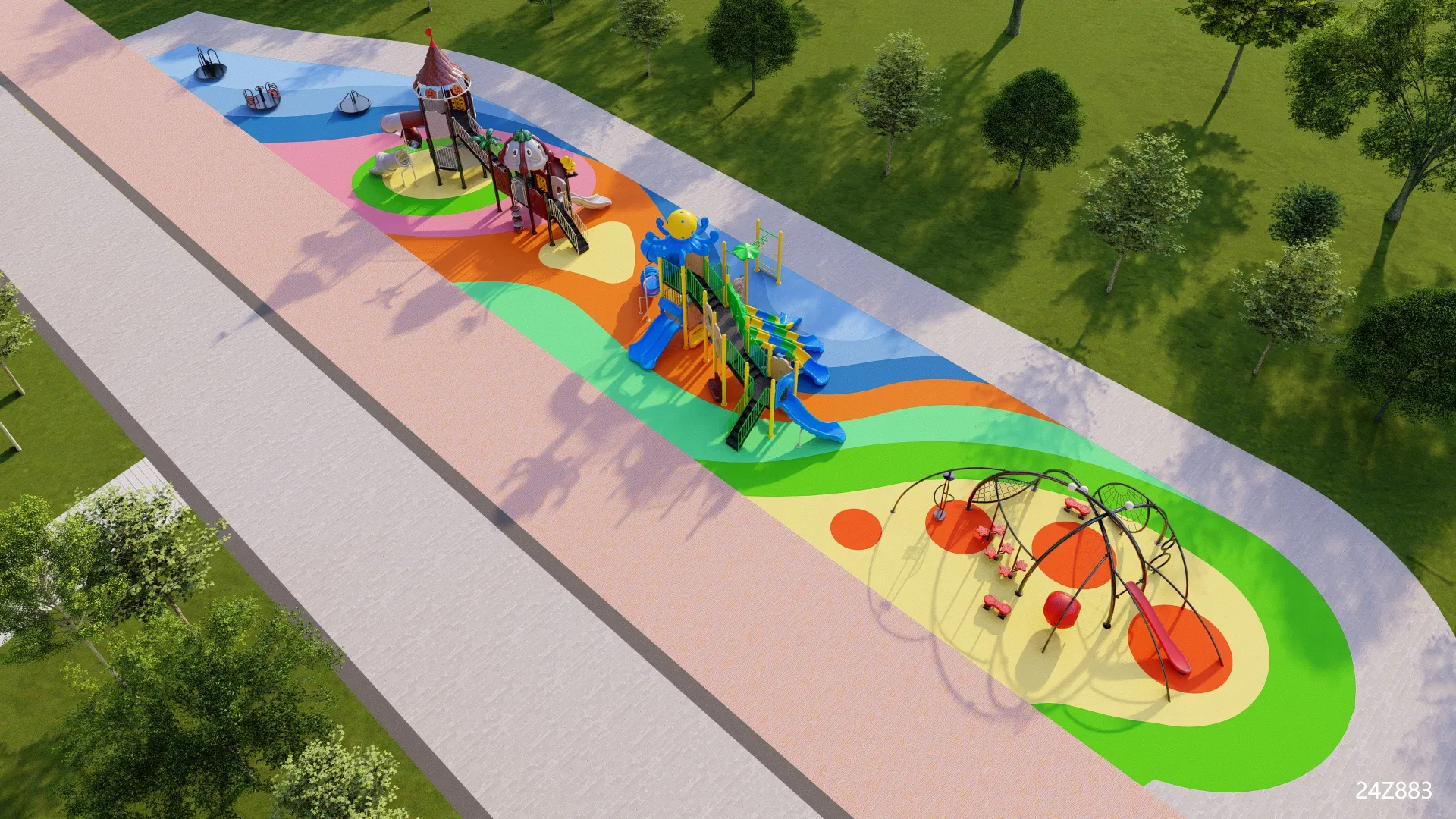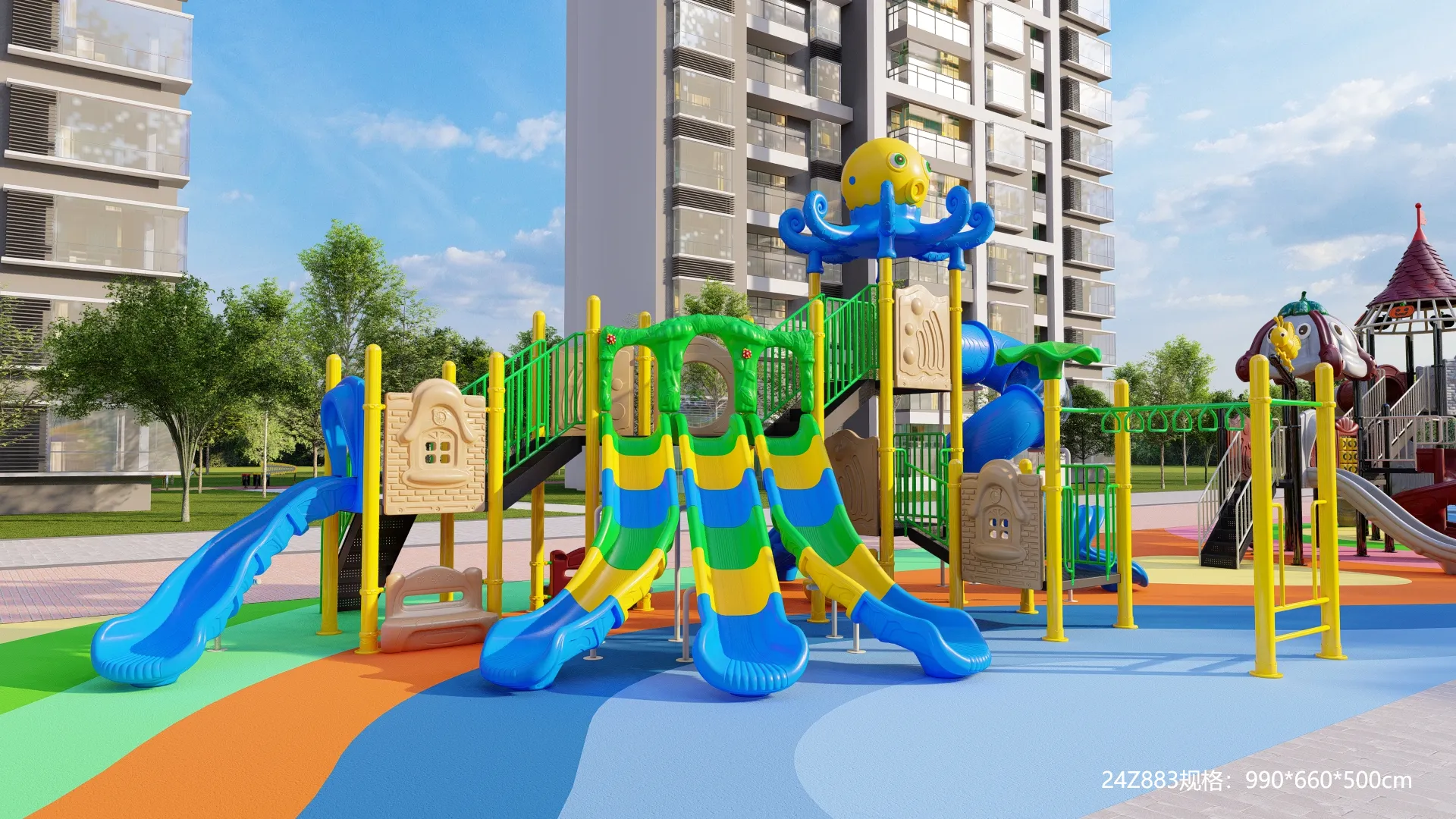
Building A Safe And Fun Outdoor Toddler Playground: Key Considerations And Features
Creating a toddler playground outdoor that is both safe and fun can be a daunting task for many parents and caregivers. If safety is neglected, toddlers are at risk of injury, and this could have serious long-term consequences. However, by designing with safety in mind and incorporating engaging play equipment, you can create a secure, enjoyable environment that promotes healthy development for young children. Read on to discover the key elements needed to design the perfect outdoor toddler playground.
A well-designed outdoor toddler playground is essential for ensuring safety, engagement, and durability for young children. By incorporating the right features, materials, and accessories, you can transform a basic play area into a safe, interactive, and educational space for toddlers.
This article will walk you through the critical features of a preschool outdoor playground, how safety regulations shape playground design, and which materials and accessories will elevate the play experience. Keep reading to learn the best practices for creating a safe, fun space for toddlers to explore and develop.
What are the essential features of an outdoor toddler playground?
When designing an outdoor toddler playground, safety is the first priority. The playground should be specifically tailored to suit toddlers, with play equipment scaled appropriately to their size. Low slides, small climbing structures, and swings that are easy to access ensure that toddlers can play safely. Play equipment should have soft edges, non-toxic materials, and be free of sharp objects or choking hazards. To encourage learning and development, consider adding interactive elements such as tactile panels, sensory stations, or small playhouses. These features not only make the toddler playground outdoor more fun but also foster creativity and social interaction. When designed correctly, a preschool outdoor playground becomes a place where children can grow, learn, and develop crucial skills.

How do safety regulations influence the design of a preschool outdoor playground?
Safety regulations play a significant role in the design of a preschool outdoor playground. These regulations are established to ensure that the playground equipment is safe for children and minimizes the risk of injury. Standards typically focus on factors such as the height of equipment, spacing between structures, and the materials used. For instance, outdoor playground equipment for schools must be designed with specific safety features, like guardrails, soft landing zones, and equipment designed with rounded corners. The materials used in construction should be non-toxic and resistant to environmental factors like UV rays or weathering. When adhering to safety guidelines, you are creating a preschool outdoor playground that is not only fun but also provides a secure environment for toddlers to explore freely.
What materials should be used for a durable and safe outdoor toddler playground?
When designing an outdoor toddler playground, choosing the right materials is essential for both durability and safety. The materials used in the construction should withstand various weather conditions while ensuring the safety of the children who use the playground. Commonly used materials include weather-resistant plastics, treated wood, and rubber. For the outdoor playground floor material, rubber tiles or soft mulch are the best options as they provide cushioning and reduce the risk of injury during falls. Wood can be an excellent choice for play structures because it’s natural and visually appealing, but it must be treated to prevent splinters. Metal, while durable, can heat up quickly under the sun, making it a less ideal choice for toddler playgrounds. Choosing the right materials ensures the longevity of your outdoor toddler playground and provides a safe environment for children.

How can you add outdoor playground accessories to enhance play and educational value?
Outdoor playground accessories can significantly enhance the play and educational value of a toddler playground outdoor. These accessories can transform a simple play area into a dynamic learning environment. For example, adding sensory panels, musical instruments, or chalkboards allows children to explore different textures, sounds, and colors. Sensory play helps toddlers develop fine motor skills, while educational elements can improve cognitive abilities. Interactive accessories such as balance beams or small tunnels can also promote physical development and coordination. Adding such elements not only increases the play value of the space but also provides an opportunity for early childhood learning. We are a reliable supplier that offers a wide range of daycare outdoor playground equipment and accessories that can be customized to meet your specific needs.

What are the best outdoor playground floor material options for toddler playgrounds?
When choosing outdoor playground floor material for toddler playgrounds, safety and durability are key considerations. Rubber tiles or mats are one of the best options because they offer excellent shock absorption and prevent injuries from falls. These materials are also weather-resistant and easy to maintain. Another popular choice is mulch, specifically wood chips or recycled rubber mulch, which also provides cushioning. However, mulch may need to be replenished over time to maintain its effectiveness. For areas that are frequently wet, such as near a water feature, consider using poured-in-place rubber or synthetic turf. Both are safe, durable, and easy to clean, making them ideal for preschool outdoor playgrounds. Selecting the appropriate outdoor playground floor material ensures a comfortable and secure surface for toddlers to play on.
How does the climate affect the design of an outdoor toddler playground?
Climate plays a crucial role in the design of a toddler playground outdoor. For playgrounds in hot climates, choosing materials that don’t absorb excessive heat is important, as equipment like metal slides can become too hot for toddlers to use safely. Shaded areas are essential to protect children from the sun, and including elements like covered seating or playhouses can provide relief on sunny days. In colder climates, choosing materials that are durable in freezing temperatures is essential to avoid damage caused by snow and ice. Additionally, certain play structures may need to be designed with safety in mind to prevent slipping. The overall layout of the playground should be adapted to the local climate to ensure that it remains safe and enjoyable year-round.

How can a small toddler playground outdoor be transformed into a fun, interactive space?
Even a small toddler playground outdoor can be transformed into a fun and interactive space by being creative with design and features. You can maximize space by incorporating multifunctional equipment, such as climbing structures that double as playhouses or slides that include tunnels. Interactive stations like sensory walls or water play areas can provide endless entertainment without taking up too much space. Using bright colors and engaging designs can make a small area feel larger and more inviting. Additionally, outdoor playground accessories such as small balance beams or educational panels can encourage toddlers to engage in imaginative play and physical activity. By making smart choices, you can turn any small space into a vibrant, educational playground.
Summary
Designing a safe and fun outdoor toddler playground requires attention to detail, from safety features to engaging accessories. By choosing the right materials and incorporating educational elements, you can create a space where toddlers can play and learn.




























